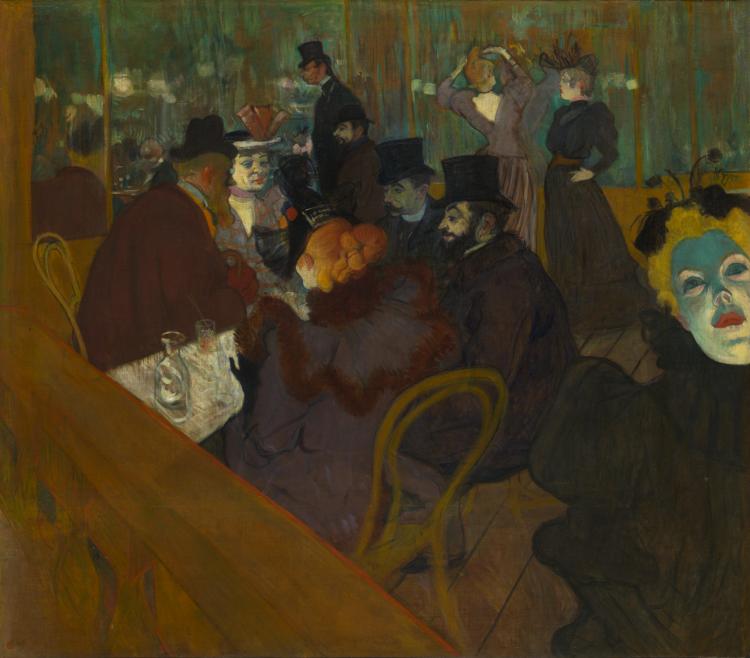Explore French Prostitution at the Musée d'Orsay

Red rooms, dimmed lights, and naked ladies: welcome to "Splendour and Misery," the Musée d'Orsay's revelatory exhibit about prostitution in France. Through an extensive collection of paintings, photographs, objects, sculptures, and video, "Splendour and Misery" sheds light on the often obscure subject of prostitution in France from 1850-1910.
'Elle' (1905): Gustav-Adolf Mossa, Musée des Beaux ArtsThe mid-19th and early 20th centuries marked a period rich in artistic innovation, and for many artists in Paris, the sources of inspiration were prostitutes. Known as the city of pleasure, artists like Dutch Vincent van Gogh and Spanish Pablo Picasso flocked to Paris where the likes of Henri de Toulouse-Lautrec, Degas, and Manet were basking in the creative café culture where sex and art fused together, revealing a side of society that had been traditionally kept private.
With their ornate outfits and sweet expressions, the women represented in the exhibition don't seem to fit the typical conception of a prostitute. This is perhaps the takeaway lesson from "Splendour and Misery." As Maxime du Camp, a French author during the period, stated: "One does not know, nowadays, if it’s honest women who are dressed like whores, or whores who are dressed like honest women."
Fauteuil d'amour, Prince de Galle's 1890 Neo-Rococo threesome-facilitating sex chair.The Parisian prostitute of the end of the century is presented as a mysterious, powerful, and even menacing figure. She can range from being bored and banal to a dancing ballerina (as seen in many of Edgar Degas' works). The exhibit shows that just when you think you can pinpoint a pierreuse, you will be surprised by the seemingly endless range of women who were prostitutes: many were working-class women with ordinary day jobs (waitresses, seamstresses), while others were high-society demi-mondaines (kept women).
"Splendour and Misery" shows it all: from the glamorous to the gritty side of French prostitution, while dismantling the myth that all prostitutes were red-clad femmes fatales. In addition to shattering stereotypes, the exhibit also highlights the surprisingly sophisticated health practices and complex laws surrounding prostitution, as well as how technology played a part in the practice (the invention of street lamps, and photography, for example).
With a wide range of captivating artwork, dark rooms with extra explicit content, and sexual artifcats, prepare to be surprised and enlightened.
"Splendour and Misery" at the Musée d'Orsay
1 Rue de la Légion d'Honneur
75007 Paris
Exhibition runs from September 22, 2015 to 17 January, 2016. Free admission for students with ID.









